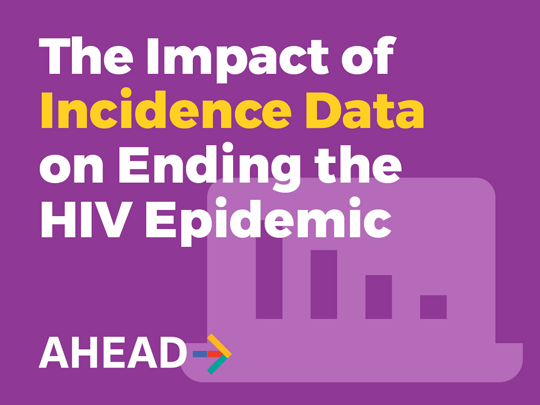The Impact of Incidence Data on Ending the HIV Epidemic

Incidence, one of the six EHE indicators tracked on America’s HIV Epidemic Analysis Dashboard (AHEAD), provides an estimate of how many new HIV infections have occurred in a year, both diagnosed and undiagnosed. Incidence is a valuable indicator because it estimates the total number of people who acquired HIV in a year, with or without being tested, allowing for more accurate allocation of resources, both within the context of regular HIV surveillance and in EHE plans. This is critical as some people with HIV may be asymptomatic or without symptoms for many years and allocating resources based on diagnosed cases alone may result in undercounting and under-resourcing. Individuals may not understand the value of getting tested and receiving a diagnosis for HIV if they do not see or experience symptoms.
Understanding what drives a rise or fall in HIV incidence within a community is central to ending the HIV epidemic in the U.S. by 2030. Incidence is one of the six HIV indicators tracked on AHEAD because it summarizes, at a high level, the effectiveness of HIV prevention and treatment programs. By fine-tuning the approach of the 4 EHE strategies (diagnose, treat, prevent, respond) and taking action based on the data, local health department officials can adjust local programs to prevent and mitigate future HIV transmissions.
Trends in HIV incidence can also be used to forecast or predict future risk. Community-based organizations and other direct service providers use incidence data to help evaluate the impact and effectiveness of HIV prevention programs and services and to identify changes in which populations, communities, and geographic areas are most at risk for HIV. Researchers and policymakers use incidence data to determine if a change in a particular factor or variable—such as access to HIV services or timeliness of treatment—could impact the risk of new infections within key populations.
Currently, incidence data on AHEAD are available at the national, state/territory, and county/area levels and population-specific incidence data are available at the national level. In the near future, state and county-level stratified data will also be available on AHEAD.
To learn more, explore AHEAD. To learn about how the incidence indicator is calculated, click here.